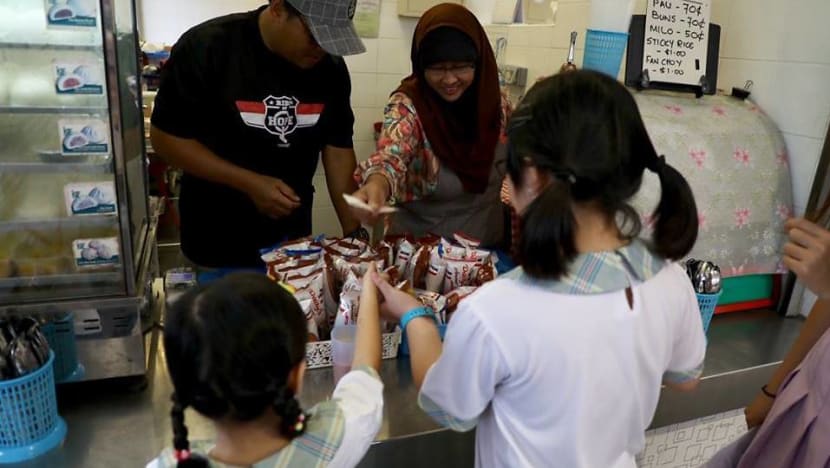MOE discussing central kitchen model with schools that cannot fill vacant canteen stalls
The central kitchen model has been shown to be effective, but scaling it up will depend on schools' needs, the education minister said.

Students buying food at their school canteen. (File photo: MOE)

This audio is generated by an AI tool.
SINGAPORE: The Ministry of Education (MOE) is discussing a different canteen operating model with schools that face challenges finding stallholders to fill their vacant stalls.
Filling vacant stalls may become more challenging in the future as more stallholders retire, Education Minister Chan Chun Sing told parliament on Tuesday (Nov 12).
"In anticipation of such challenges, MOE is discussing with schools which are keen and ready to adopt a different canteen operating model," he said.
One such model is for meals to be preordered and prepared at a central kitchen before being delivered to schools.
Mr Chan said this central kitchen model has been piloted at Yusof Ishak Secondary School and "shown to be effective".
He added that if existing stallholders are affected by such a transition, schools will help by referring them to nearby schools or recommending them for employment by the central kitchen operator.
Food service firms with central kitchens that currently serve school canteens include SATS and Select Group.
The Ministry of Education (MOE) works with schools to monitor canteen food quality, quantity and prices. Canteen stallholders are required to serve meals with a balanced diet. MOE regularly reviews the food pricing guidelines for schools. Students from lower-income families on MOE's Financial Assistance Scheme receive school meal subsidies. Schools are also given additional funds to provide further assistance to students who need more help. Some schools have difficulty finding stallholders to fill vacant stalls and this may become more challenging in the future as more stallholders retire. Education Minister Chan Chun Sing, who highlighted this in reply to MPs’ questions in Parliament on Tuesday (Nov 12), said MOE is discussing with schools which are keen and ready to adopt a different canteen operating model. For example, meals can be pre-ordered and prepared in a central kitchen and delivered to the schools. This model has been piloted at Yusof Ishak Secondary School and found to be effective, said Mr Chan.
Mr Chan was responding to questions about school canteens by Members of Parliament (MPs) Louis Chua (WP-Sengkang), He Ting Ru (WP-Sengkang) and Yip Hon Weng (PAP-Yio Chu Kang).
They asked about rising costs faced by school canteen vendors and the nutritional value of meals provided in school.
Canteen stallholders must serve meals that adhere to the Health Promotion Board's nutritional guidelines. MOE regularly reviews school food pricing guidelines so stalls can continue to provide healthy and affordable meals, Mr Chan said.
Stallholders are charged rentals of between S$5 (US$3.75) and S$15 a month, which are waived during school holidays.
Canteen vendors previously told CNA that they struggle with costs, as price inflation, limited operating hours and home-based learning make it tough to maintain a steady income.
Mr Chua asked whether MOE would review the current decentralised canteen model and scale up the central kitchen model to more schools, in light of financial sustainability concerns.
"As to the scale and the speed of the scaling up of the central delivery model, it will very much depend on the circumstances of the various schools as well," Mr Chan replied.
"Different schools have different needs, and we will make the necessary transitions according to the different needs of the schools."


















